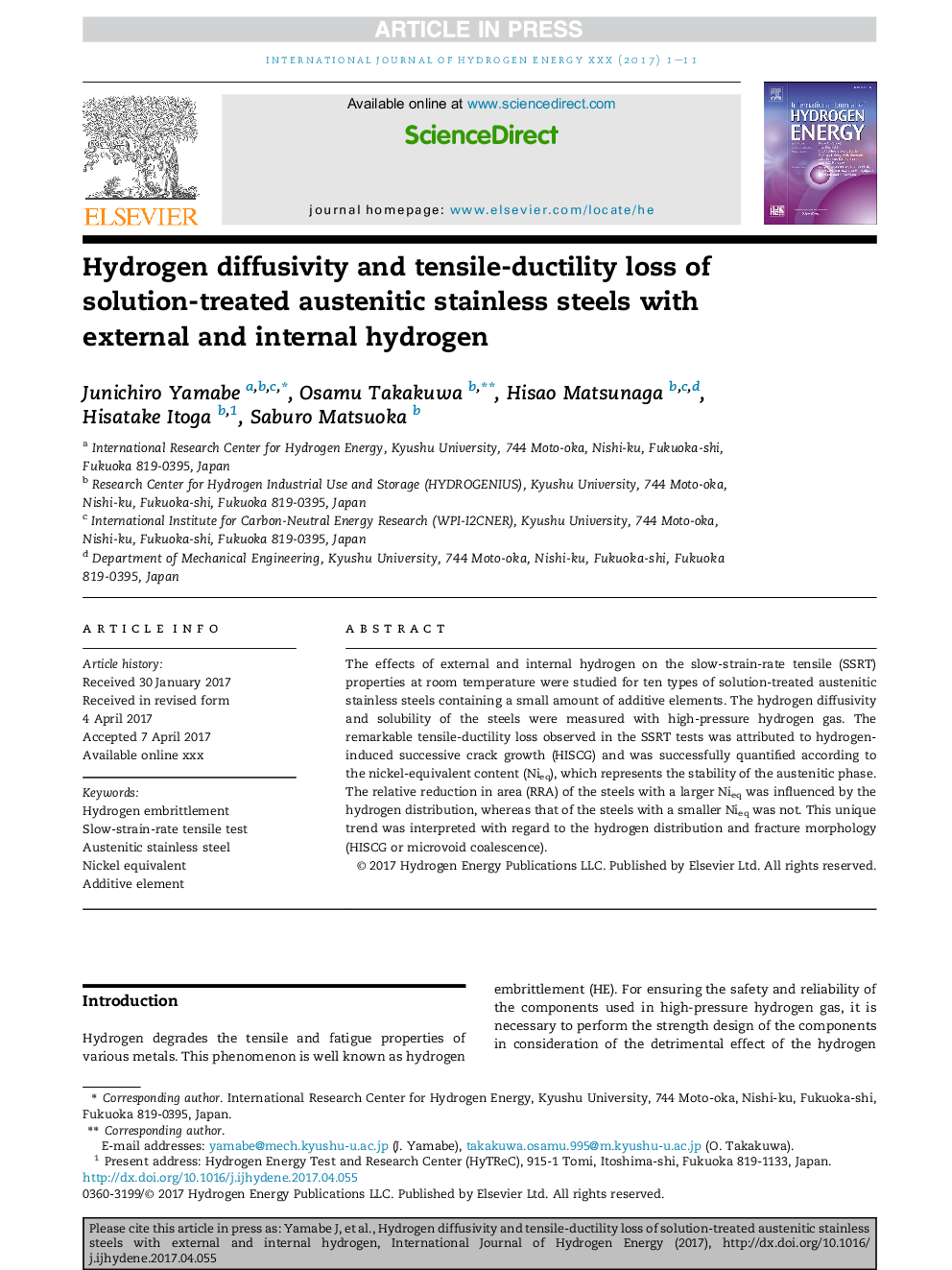| Article ID | Journal | Published Year | Pages | File Type |
|---|---|---|---|---|
| 5147515 | International Journal of Hydrogen Energy | 2017 | 11 Pages |
Abstract
The effects of external and internal hydrogen on the slow-strain-rate tensile (SSRT) properties at room temperature were studied for ten types of solution-treated austenitic stainless steels containing a small amount of additive elements. The hydrogen diffusivity and solubility of the steels were measured with high-pressure hydrogen gas. The remarkable tensile-ductility loss observed in the SSRT tests was attributed to hydrogen-induced successive crack growth (HISCG) and was successfully quantified according to the nickel-equivalent content (Nieq), which represents the stability of the austenitic phase. The relative reduction in area (RRA) of the steels with a larger Nieq was influenced by the hydrogen distribution, whereas that of the steels with a smaller Nieq was not. This unique trend was interpreted with regard to the hydrogen distribution and fracture morphology (HISCG or microvoid coalescence).
Related Topics
Physical Sciences and Engineering
Chemistry
Electrochemistry
Authors
Junichiro Yamabe, Osamu Takakuwa, Hisao Matsunaga, Hisatake Itoga, Saburo Matsuoka,
